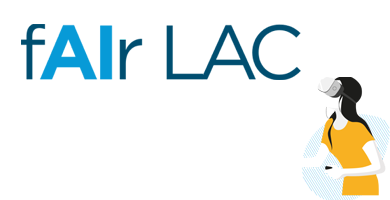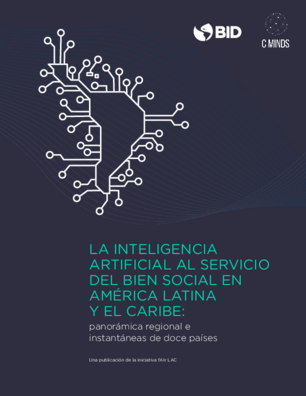Pilot
Gender-based violence
México. Jalisco

Given the need for digitalization to advance in the construction of a standardized care system for victims among the various areas of government, along with the Secretariat for Substantive Equality between Women and Men (Secretaría de Igualdad Sustantiva entre Mujeres y Hombres, SISEMH), we identified an opportunity to improve the first-contact points with women victims of violence by digitally storing their complaints. It allows escalating reports between areas without victims needing to narrate the events repeatedly and speeds up the possible submission of a complaint by shortening the bureaucratic gaps.
Problem to be solved
Women who seek direct attention have to repeatedly narrate the aggressions they experienced as they are referred to different government bodies and care institutions depending on the type of violence they experienced, generating a feeling of fatigue, revictimization, and poor perception of care and trust in democratic institutions.
Public officials collect the information by hand and transcribe it into a computer, which implies a significant loss of time and a window to greater human errors such as interpretation, paraphrasing, or omission of important information.
- The Attention Unit personnel has a high workload since being the first point of contact for victims, and one of the most time-consuming tasks is the accurate transcription of the reports, in addition to filling out the forms.
- The details of the cases are mostly saved in Excel format and stored in Google Drive.
- Follow-up depends on the ability of the counseling teams to schedule reminders for periodic follow-ups; such follow-ups can delay due to workload and forgetfulness in scheduling such reminders.
Populations affected by the problem
Women who are victims of violence in the state of Jalisco seeking counsel at the Metropolitan Unit for Comprehensive Care of Women and Children (Unidad Metropolitana de Atención Integral a Mujeres y Niñez, UREA).
Public officials of first contact attention, psychologists, systematizers, decision-makers, and public policy designers.
The current response to this problem, considering the related institutions
Victims come to the SISEMH/DAMVV physically seeking advice, support, and guidance to solve their cases. A social worker is appointed to interview them, who manually fills out a Single Registration Card (Cédula de Registro Único, CRU).
- They collect their data and testimony, and using the Danger Assessment methodology (20 questions), they analyze the risk level and store the data in a Drive on the cloud.
- Should the victim be redirected to another instance, they will have to report the crime again. There is no communication between different authority levels.
Proposal to solve the problem using AI
To implement a "speech to text" model program for the automation and digitalization of files and reports of (adult) women victims assisted in the Units of SISEMH in the State of Jalisco.
The solution proposes introducing a device that records the story of women victims of gender-based violence and using audio-to-text conversion AI models to digitally store the victim's story as narrated.
What security considerations, national laws, or standards should be considered to use each source of information?
All the considerations related to the storage and use of sensitive data (victims' stories) were reviewed since the system currently used to store the databases is very vulnerable. Therefore, it is necessary to determine who will be the custodian of the data and responsible to produce specific legislation to protect victims' personal data.
It is also necessary to explicitly obtain the victims' consent to process their data.
Progress/results to March 2022
With the support of Tec de Monterrey, the SISEMH of Jalisco assessed the current situation in the process of care for women victims of violence in Jalisco to analyze how AI could support the institution in its care processes.
- A workshop with the SISEMH of Jalisco was conducted to identify the problem and the priorities.
- Five solutions were presented to the Government Innovation Coordination and the Secretariat of Equality of the Government of Jalisco. One was chosen as the most convenient to solve the identified problem.
- A feasibility and design workshop was held with the participation of the Secretariat and Tec de Monterrey's technical team. The scope and feasibility of the IA solution were defined, and the necessary data was identified.
- Currently, agreements are being signed to share data between the Secretariat and Tec de Monterrey.
Goals for 2022-II
- Finalize pilot implementation and documentation by May 2023.
- Close the design of the solution by identifying initial needs such as access to data and legal issues of inter-institutional agreements.
- Start development in August 2022.
Main implementation challenges
To ensure the machine does not misunderstand the vocabulary used in the narratives (local expressions, idioms, slang); also, infrastructure, labeled training data, and test data are not currently available, and these problems may take a long time to solve.
The "story summarization model" will require intensive training, and the team of the Secretariat noted that this model might be difficult to implement due to time, data, infrastructure, and resources issues, and it is also unclear how to evaluate the impact of the model. Likewise, it is also unclear how to assess whether the summaries are complete and how such a summary would help the process.
Main AI challenges identified
Similar to implementation challenges related to the use of language.
Hub
Jalisco
Sector
Gender
Location
Jalisco, México
Executing Entity
Government of Jalisco - Tec de Monterrey
State
Design
Contact
It may interest you
Colombia lanzó la Misión de Expertos en IA para evaluar las potencialidades de la IA y dar recomendaciones concretas en el corto, mediano y largo plazo.
This self-assessment tool is designed to allow the mitigation of ethical risks associated with the use/application of new technologies. It is available so that the ethical performance of each system can be evaluated from the beginning.
The Regional Landscape and 12 Country Snapshots



